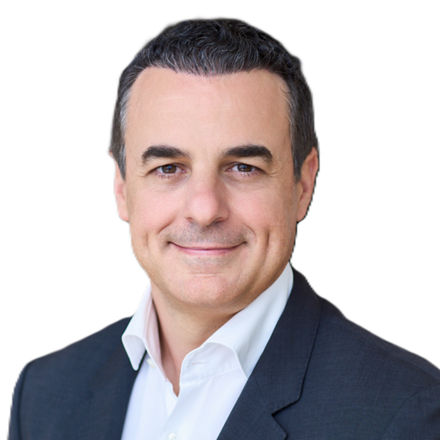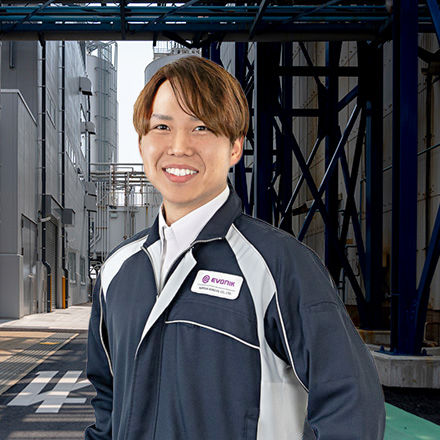927 days—that’s how long it took from the groundbreaking to the opening of the new aluminum oxide plant in Yokkaichi, Japan. By the end of October 2025, the time had come: Evonik commissioned “Alu5,” the chemical company’s first plant for fumed aluminum oxide in Asia.
The plain white powder is a key material for technologies that shape our daily lives. In lithium-ion batteries, it enhances safety and extends lifespan. The ultra-thin ceramic coating of the separator prevents it from deforming under heat, thereby reducing the risk of short circuits. In powder coatings, it improves surface durability, while in electronic components, it provides stability and supports heat dissipation.


»From battery technologies to coatings, this facility enables faster, more efficient access to the materials that drive these industries.«
Elias Lacerda Head of the Business Line Coating Additives
“From battery technologies to coatings, this facility enables faster, more efficient access to the materials that drive these industries,” said Elias Lacerda, head of Evonik’s Coating Additives business line, at the opening of the new plant. Thanks to its properties, the metal oxide increases the efficiency and lifespan of numerous products. Additionally, it contributes to greater sustainability by enabling durable, resource-efficient solutions.
ELEMENTS-Newsletter
Get exciting insights into Evonik's research and its societal relevance—delivered conveniently via email.
Evonik has decades of experience in the demanding production of metal oxides and has continuously optimized the process: The raw material aluminum chloride is vaporized and fed into a hydrogen-oxygen flame. Within milliseconds, the gases react, forming tiny nuclei that merge into primary particles and aggregates. By precisely controlling temperature, gas composition, and residence time, particle size and surface structure can be adjusted with precision. The result: a highly pure, fine-grained material with a large specific surface area and unique properties—Evonik’s Aeroxide.

Focus on Sustainability
“The opening of our Alu5 plant is more than just a capacity expansion. It reflects our firm commitment to bringing our high-performance aluminum oxide products closer to our customers in Asia,” said Emmanuel Auer, head of the Smart Effects business line.

»We are all very proud to operate Evonik's first facility of this kind in Asia.«
Shogo Ichinozuka Engineer at Evonik
This is important because the new facility helps shorten transport routes, thereby reducing the carbon footprint. It is also equipped with state-of-the-art process technology to use energy efficiently and minimize emissions. As such, “Alu5” contributes to Evonik’s “Next Generation Solutions” strategy. These are products and solutions that provide demonstrable sustainability benefits, facilitating the green transformation of industry and society.

The People Behind the Project
Engineers like Saefuludin and Shogo Ichinozuka planned the processes, selected components, and developed safety concepts. “It’s a special moment when theory and planning meet reality—and everything works as intended,” said Saefuludin.
But for him, this is just the beginning: Now it’s about further optimizing workflows and making production even more sustainable.
“We are all very proud to operate Evonik’s first plant of this kind in Asia. From our location, we can help drive mobility toward a sustainable future,” said engineer Ichinozuka.
From Yokkaichi, Evonik will now be able to supply major battery manufacturers in China, Korea, and Japan more quickly and cost-effectively with products like Aeroxide. “This will give e-mobility in Asia an additional boost,” Ichinozuka hopes.

How a Lithium-Ion Battery Works
A battery consists of two electrodes: an anode and a cathode, with the anode having a lower electron potential than the cathode. Between the two electrodes is a lithium salt electrolyte. The anode and cathode are also separated by a separator, which is permeable to ions but does not conduct electricity. During discharge, lithium ions flow to the cathode, while electrons flow through the external circuit to the cathode. During charging, electrons flow through the external circuit to the anode. At the same time, positively charged lithium ions migrate through the electrolyte from the metal oxide of the cathode to the graphite layers of the anode.



